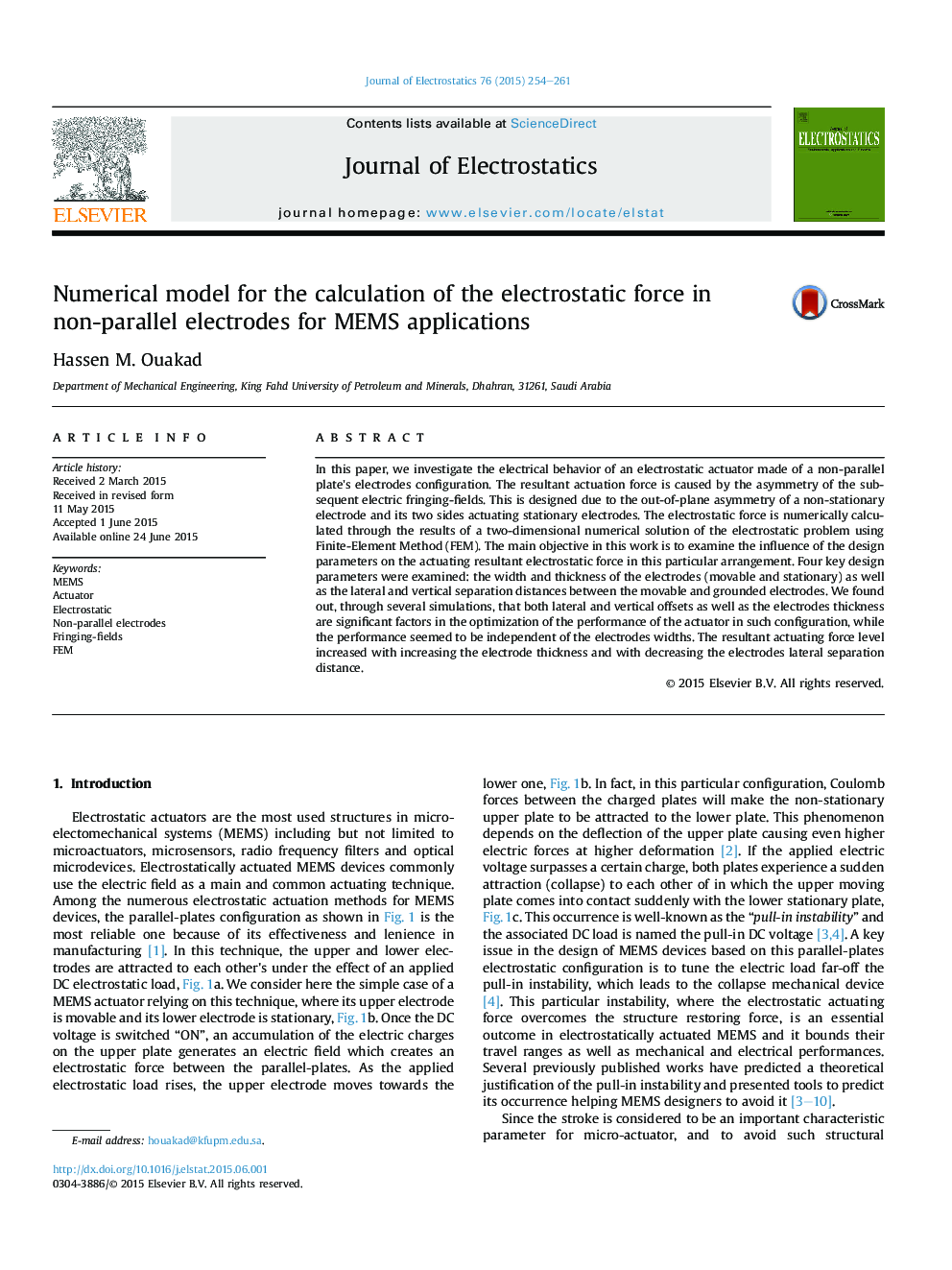| Article ID | Journal | Published Year | Pages | File Type |
|---|---|---|---|---|
| 724236 | Journal of Electrostatics | 2015 | 8 Pages |
•Electrical behavior of non-parallel plate's electrodes electrostatic actuator is investigated.•Resultant electric force caused by the asymmetry of the subsequent electric fringing-fields is numerically/analytically calculated.•Influence of the design parameters on the actuating resultant electric force are ascertained.
In this paper, we investigate the electrical behavior of an electrostatic actuator made of a non-parallel plate's electrodes configuration. The resultant actuation force is caused by the asymmetry of the subsequent electric fringing-fields. This is designed due to the out-of-plane asymmetry of a non-stationary electrode and its two sides actuating stationary electrodes. The electrostatic force is numerically calculated through the results of a two-dimensional numerical solution of the electrostatic problem using Finite-Element Method (FEM). The main objective in this work is to examine the influence of the design parameters on the actuating resultant electrostatic force in this particular arrangement. Four key design parameters were examined: the width and thickness of the electrodes (movable and stationary) as well as the lateral and vertical separation distances between the movable and grounded electrodes. We found out, through several simulations, that both lateral and vertical offsets as well as the electrodes thickness are significant factors in the optimization of the performance of the actuator in such configuration, while the performance seemed to be independent of the electrodes widths. The resultant actuating force level increased with increasing the electrode thickness and with decreasing the electrodes lateral separation distance.
